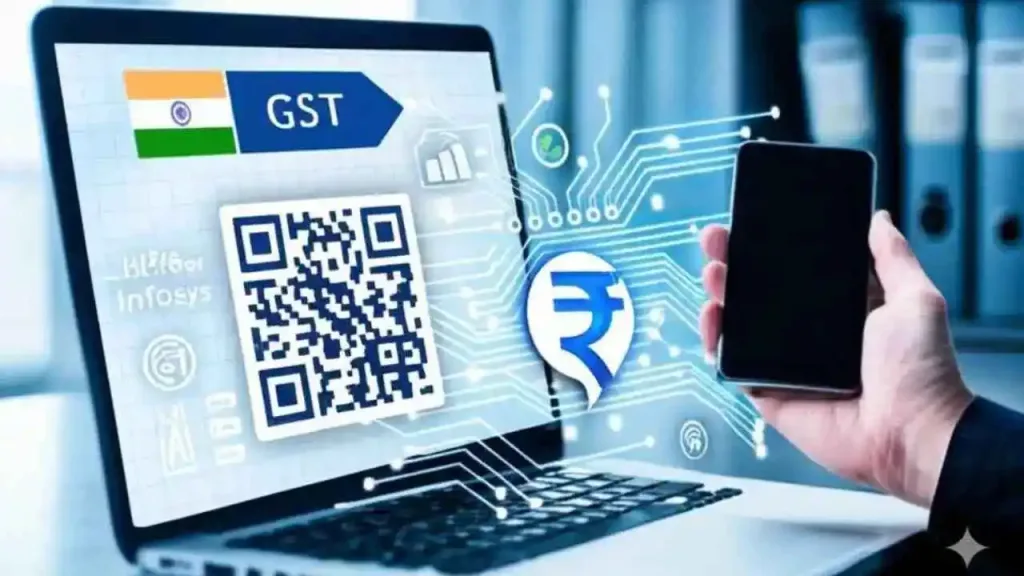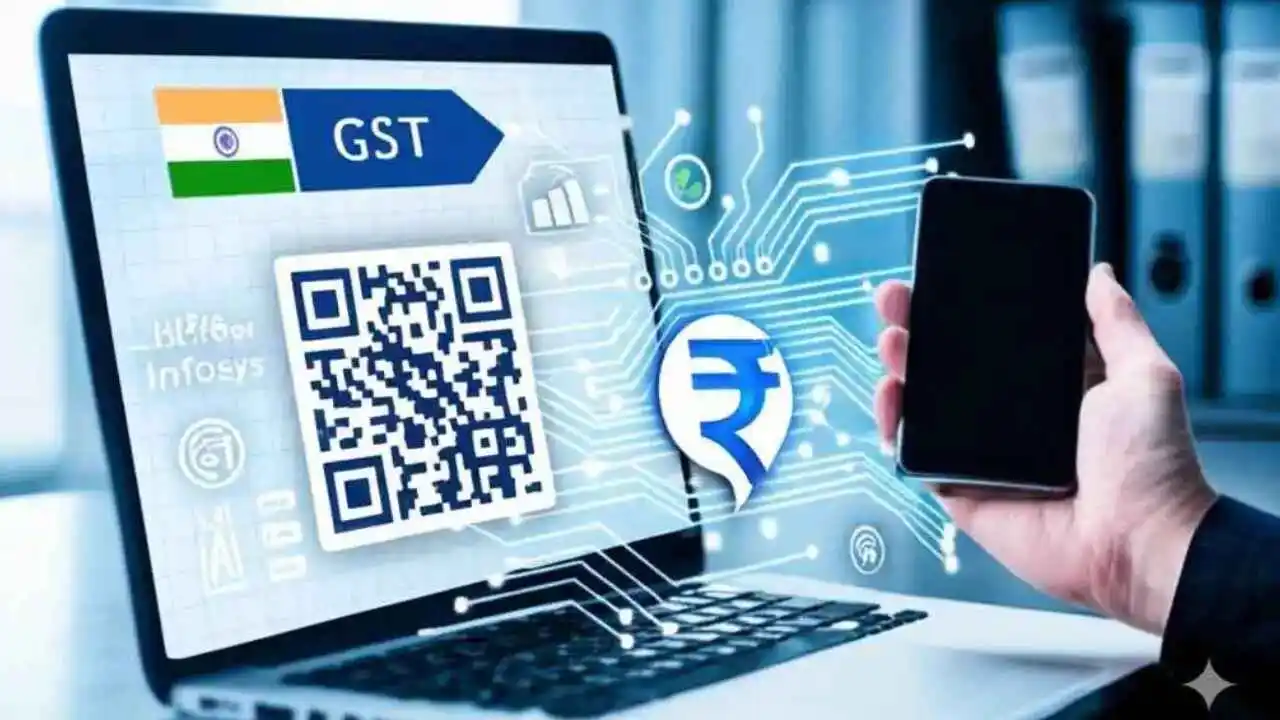UPI and GST: Powering India’s Digital and Fiscal Evolution
Introduction
Over the past decade, two transformative forces have quietly reshaped the contours of India’s economic and digital landscape—Unified Payments Interface (UPI) and the Goods and Services Tax (GST).
UPI, a real-time payment system developed by the National Payments Corporation of India (NPCI), enables seamless fund transfers across bank accounts via mobile apps. Its ease of use and interoperability have made it the backbone of India’s digital payments revolution.
GST, launched in 2017, marked a tectonic shift in the country’s indirect taxation system. It replaced a tangled web of state and central levies with a unified tax regime aimed at increasing transparency, compliance, and economic efficiency.
Together, UPI and GST represent the twin pillars of a modern, connected India—one digital, the other fiscal—each playing a vital role in enhancing governance, promoting formalization, and fostering inclusive growth.
The Road to Reform: History and Evolution
The Rise of UPI
Launched in April 2016, UPI was a response to the growing need for a seamless digital payment infrastructure in a fast-digitizing economy. Spearheaded by the NPCI under the aegis of the Reserve Bank of India (RBI), UPI initially received a modest reception. However, the 2016 demonetization served as a catalyst, catapulting the platform into mainstream usage almost overnight. What began as an experiment in real-time bank transfers is now processing billions of transactions monthly, with volumes rivaling global giants like Visa and Mastercard.
GST: A Fiscal Game-Changer
The Goods and Services Tax, implemented on July 1, 2017, was among the most ambitious tax reforms in India’s post-independence history. By subsuming multiple indirect taxes—such as VAT, service tax, and excise duty—GST sought to eliminate cascading tax effects and simplify compliance across states. Its primary aim: to create a single, unified national market with a transparent and streamlined taxation structure.

Inside the Engine: How UPI Works
UPI allows users to link multiple bank accounts through a single mobile platform, enabling instant fund transfers using just a Virtual Payment Address (VPA). The platform is supported by a wide array of applications, including Google Pay, PhonePe, Paytm, BHIM, and Amazon Pay, among others.
Key features of UPI include:
- Real-time fund settlement using the IMPS framework.
- Interoperability between different banks and apps.
- QR code-based merchant payments, reducing friction for offline transactions.
- Two-factor authentication, ensuring a secure environment.
The platform supports peer-to-peer transfers, bill payments, merchant transactions, and even subscription services—offering a one-stop digital financial ecosystem.
How GST Operates in Practice
The GST framework comprises three core components:
- CGST (Central GST) – collected by the central government on intra-state transactions.
- SGST (State GST) – collected by state governments on intra-state transactions.
- IGST (Integrated GST) – applicable on inter-state transactions and imports.
GST compliance is managed via the GSTN (Goods and Services Tax Network)—a digital platform where businesses register, file returns, and claim input tax credits. Taxpayers are categorized based on turnover, and required to file monthly, quarterly, or annual returns depending on their category.
With tax rates ranging from 0% to 28%, GST covers nearly all goods and services. The introduction of e-invoicing and e-way bills has added layers of accountability and reduced scope for evasion, while the input tax credit system ensures that taxes are levied only on value addition.
Recent Developments: Bridging UPI and GST
In a landmark move, the government in 2022 approved the integration of UPI for GST payments, allowing taxpayers—especially small businesses and startups—to pay dues via digital wallets and mobile apps. This seamless interface not only boosts convenience but also aligns with the larger vision of ‘Faceless, Paperless, Cashless’ tax administration.
Several states and departments have also begun incentivizing UPI-based tax and fee payments, embedding digital payments deeper into the fiscal ecosystem.
Impact: Transforming Business and Consumer Experience
Empowering Enterprises
For businesses, especially MSMEs, UPI and GST have ushered in a new era of operational ease:
- Faster cash flows through real-time payments.
- Simplified bookkeeping with digital GST filings.
- Reduced tax complexity by replacing multiple levies with a single structure.
Moreover, digital trails created by UPI transactions have made it easier for businesses to access formal credit, as financial data becomes more traceable and reliable.
Benefits to Consumers
Consumers have embraced the UPI revolution for its convenience, speed, and reliability. The ability to make instant payments, split bills, or shop without physical cash has changed daily life across both urban and rural India.
On the tax front, GST has increased transparency in pricing, with clear visibility of tax components on bills. This accountability, in turn, has helped build consumer trust.
Together, these platforms have catalyzed the formalization of India’s economy, expanding the tax base and encouraging digital behavior at every level.
Challenges and Criticisms
The UPI Conundrum
Despite its success, UPI faces challenges:
- Cybersecurity threats, phishing scams, and fake app frauds have seen a sharp rise.
- Zero Merchant Discount Rate (MDR) policy has made the model financially unsustainable for some service providers, raising questions about long-term viability.
GST Growing Pains
GST, while revolutionary, hasn’t been without criticism:
- Complex compliance requirements often burden small traders with limited technical know-how.
- Frequent policy changes, including rate revisions and portal glitches, have added to taxpayer confusion.
- High compliance costs for small and micro enterprises, many of whom rely on consultants for monthly filings.
Nonetheless, the government continues to tweak and evolve both systems to address these concerns.
What Lies Ahead: The Future of UPI and GST
UPI’s Next Leap
The future of UPI is focused on inclusivity and innovation:
- UPI Lite: Enables small-ticket offline transactions without PIN.
- Credit on UPI: Allows linkage of credit cards and bank overdrafts for broader usage.
- International expansion: Countries like Singapore, UAE, Nepal, and France are embracing UPI connectivity, making it a global benchmark.
GST’s Reform Trajectory
GST is poised for further simplification:
- Introduction of single-page returns to ease filings.
- Expansion of e-invoicing mandates to cover smaller businesses.
- Deployment of AI and analytics for fraud detection and better policy calibration.
With continued refinement, GST is expected to become more taxpayer-friendly while strengthening compliance and revenue collection.
Conclusion
In many ways, UPI and GST symbolize India’s journey from a fragmented, cash-heavy economy to one that is more connected, transparent, and inclusive. UPI has democratized digital payments, while GST has laid the foundation for a unified tax regime.
Individually, they are monumental. Together, they represent a powerful synergy—digitally empowered transactions backed by a transparent, streamlined fiscal framework. As India marches toward a $5 trillion economy, UPI and GST will remain central to its economic architecture and digital governance.
